Since the upper Paleolithic times, we’ve been painting pictures on walls with many advanced civilizations across the ancient world decorating sacred sites, cities, and tombs with murals meant to entertain, share information, and pass on history. But by the twentieth century, much of Western civilization had moved to the point where art was relegated to other mediums. This, of course, created a space for a subculture to bloom, with modern-day murals and street art alive and vibrant as ever thanks, in large part, to Latinx people making it possible.
No really, modern street art (which, of course, is driven by a number of cultural contributions) wouldn’t be where and what it is today without the Mexican Revolution. After Mexico won its independence from Spanish control, the newly formed Mexican government began efforts to educate its population on the country’s long and storied history by commissioning murals and other public works of art that detailed Mexico’s history, from the pre-colonial times, through Spanish occupation, recasting the peasants and workers as the lifeblood of the country.
Through the work of artists like José Clemente Orozco, David Alfaro Siqueiros, and Diego Rivera, (who would also go on to paint murals in the United States) Mexican Muralism was so grand, politically charged, and important, that it single-handedly brought murals back to the forefront of the Western art world, inspiring many countries to follow suit. The movement resonated for generations, eventually inspiring the Chicano art movement of the United States in the 1970s. That influence mixed with the graffiti movement of the late ‘70s and early ‘80s would come to define the landscape of street art in US cities across the country today.
So as Hispanic Heritage Month comes to a close, we’re shouting out five cities where you can see some of the finest modern Latinx art adorning walls, alleyways, and streets, serving as a reminder of the debt US street art owes to the Mexican muralist movement and Latinx artists all across the world.
Austin, Texas
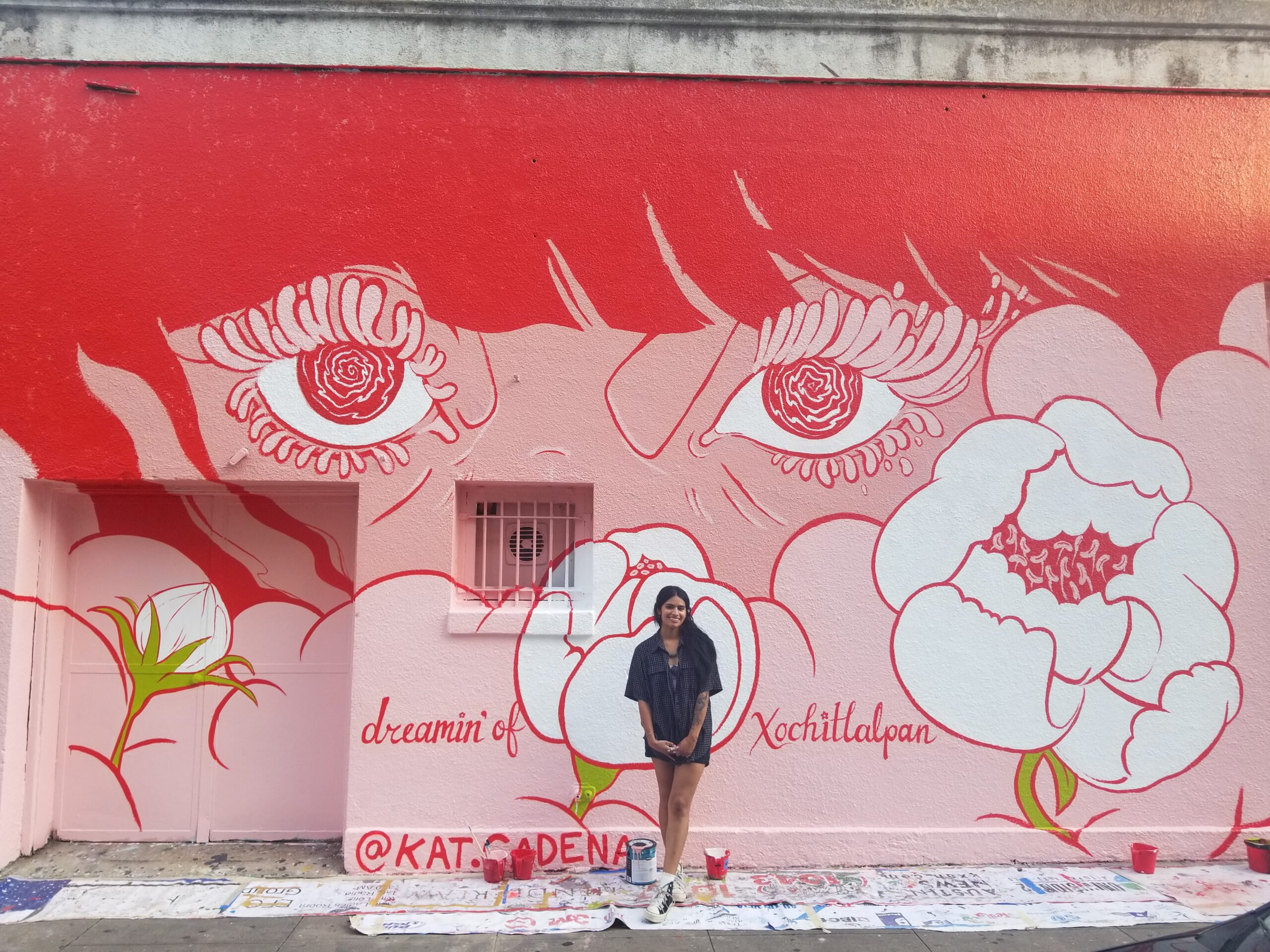
Given Texas’ proximity and connection to Mexico, it shouldn’t come as a surprise that some of the best Latinx art can be found on the walls of Austin. A simple stroll through the city will no doubt bring you face to face with many different murals and street art by artists from all over the world (and Austin of course), but if you’re looking for Latinx art specifically, the Mexic Arte Museum’s El Mero Muro program will guarantee you’ll find something directly connected to Mexico on the museum’s exterior wall on 5th St. and Congress Avenue.
The El Mero Muro wall is constantly shifting with the new murals. Currently, a work known as “The Ofrenda,” by Alonso Estrada, Gus Estrada, and Jenn Contreras adorns the wall until the end of the month. The 42×14 foot mural depicts a family setting up a traditional ofrenda table for their beloved departed as part of Dia de Los Muertos.
Also on the wall is a painting by Amado Castillo III and Amado Castillo IV called “Lead To Live,” as well as “Dreaming Of Xochitlalpan,” painted by San Antonio-based Kat Cadena. All three murals are distinct from one another and show the diversity of styles you can expect to find all throughout Austin.
New York City, New York
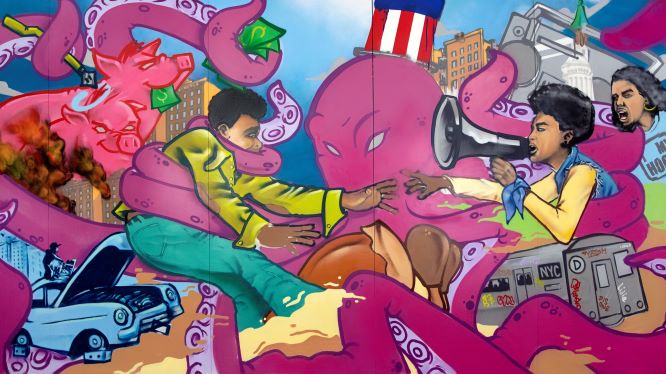
New York City stands as one of the finest cities for street art in the United States, and with a large Cuban and Puerto Rican population, the city is home to many works of art painted by Latinx artists. One notable mural is East Harlem’s “Dos Alas Mural,” which celebrates anti-imperialist icons Don Pedro Albizu Campos and Che Guevara and was painted by members of Ricanstruction Netwerks and the Puerto Rico Collective.
The mural is meant to celebrate the bond between Puerto Rico and Cuba as well as New York City’s Hispanic population in East Harlem. The mural is not without its controversy, recently in 2019 it was vandalized with red paint due to its politically charged nature, but as we mentioned in the lead, modern mural work was born through political commentary. These works stir emotion, and they’re better for it. Luckily for visitors, the mural has since been restored.
Other areas of the city are also home to vibrant Latinx wall art, like Washington Heights’ “Latinx Diaspora: Stores From Upper Manhattan” painted on the Audubon Terrace. The work reflects the history of Latinx immigration to the neighborhood and is a celebration of the neighborhood’s past, present, and future.
Los Angeles, California
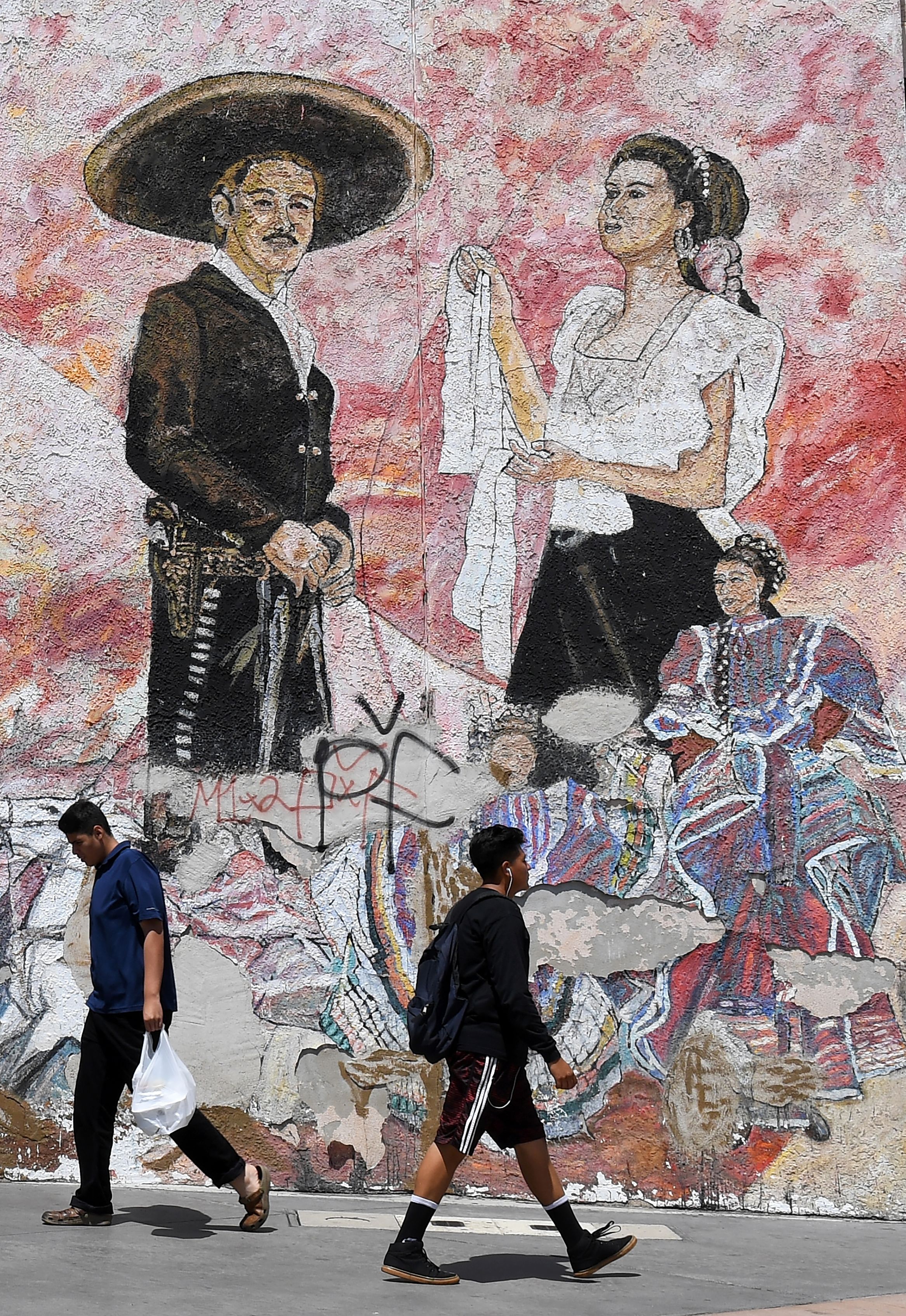
Established at a time when Southern California was still a part of Northern Mexico, Los Angeles’ roots are intertwined with Mexico. Add to that the fact that the city remains the largest concentration of Latinx and Hispanic peoples in all of the United States, the city has a strong and prominent Latin influence that is felt in every corner of the city from the Valley to Long Beach and beyond.
Downtown Los Angeles’ Olvera Street is still home to “América Tropical” which was painted by David Alfaro Siqueiros in the ‘30s. As I mentioned in the intro to this article, Siqueiros was one of Mexico’s most important muralists and spent some time in the city after his expulsion from Mexico for his radical political statements. The art piece, as was always the case with Siqueiros, was extremely political and depicted the oppressive nature of US imperialism via a crucified Indian on a double cross with an American eagle perched on top with a Mayan pyramid in the background.
It was a bold move to call out US oppression on American soil, and the piece was subsequently whitewashed before being rediscovered in the 1960s.
Today “América Tropical” can still be reviewed, though the mural has lost its vibrancy due to the whitewashing and subsequent sun damage. Luckily, the city remains a hot spot for Latinx art, with the highest concentration of mural work found in the Hispanic neighborhood of Boyle Heights, which is located just east of the LA river.
Boyle Heights is one of the few neighborhoods that hasn’t been completely gentrified, and still houses a strong Hispanic working-class community. Street art can be found in every corner of the small neighborhood, adorning tortillerias, auto shops, and storefronts. It’s literally everywhere! If you’re in LA and on the hunt for murals, you’re sure to find a lot in Boyle Heights, no guide necessary. After you check out the art, jump on the newly built Sixth Street Bridge and head into the Art’s District to find even more contemporary murals before hitting nearby Olvera Street to see the master’s work.
Miami, Florida
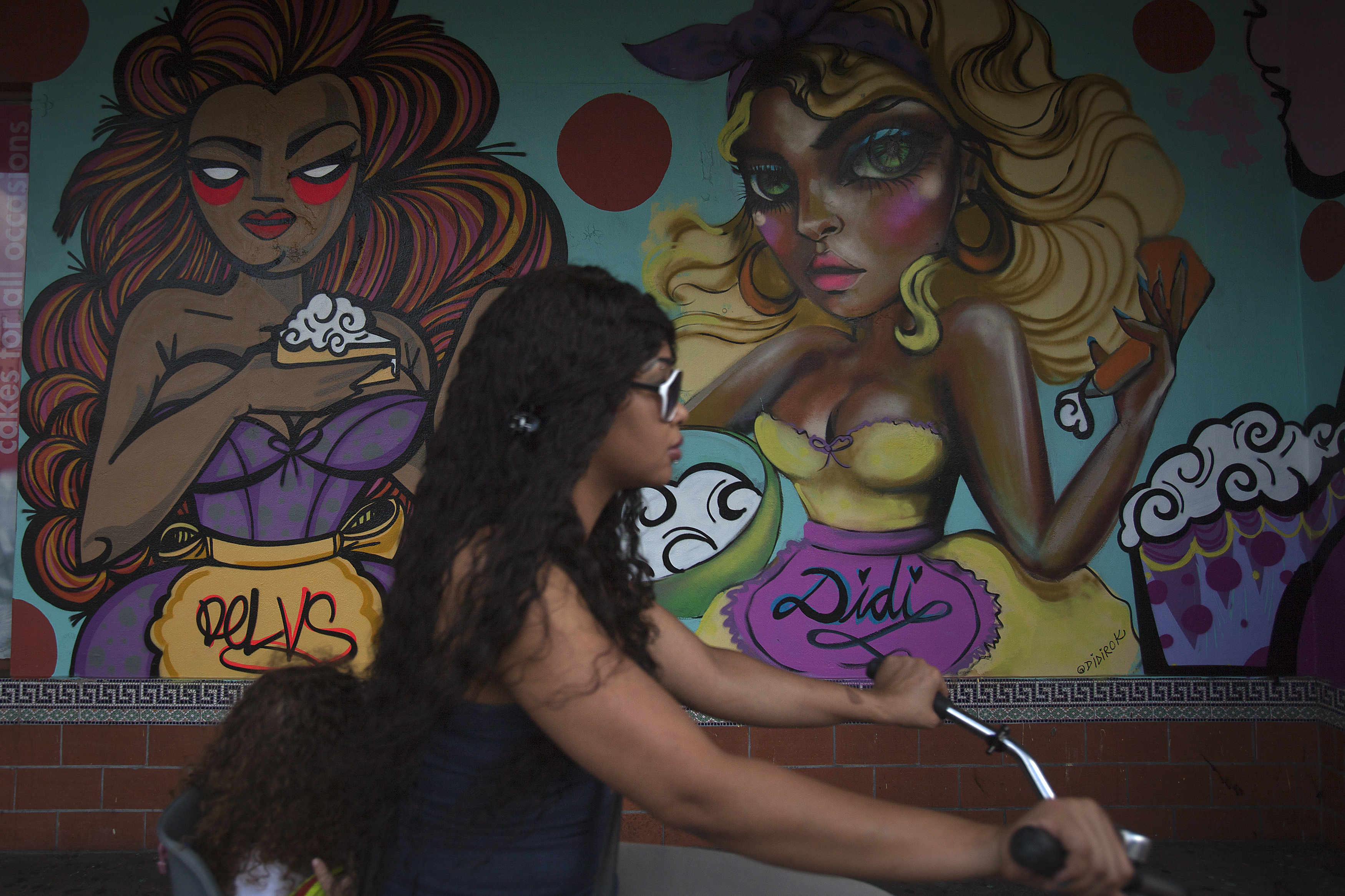
Like Los Angeles is to Mexican culture, Miami is intertwined with the culture of Cuba. The city is known for its bright and vibrant street art, particularly the Wynwood Walls, an outdoor urban museum where walls are covered in murals from local talent and world-renowned graffiti artists like Futura, Shepard Fairey, and Adam Vargas (aka Atomik). But if you’re looking for art that specifically speaks to the Latinx population living in Florida, look no further than 8th street, aka Calle Ocho.
The Cubaocho Art and Research Center features many murals celebrating Cuban culture on its exterior, and the neighborhood’s most famous mural, “Welcomes You To Little Havana,” has become a tourist destination since it was commissioned in 2012. That mural was painted by Vargas, whose art is all over the city and is best represented by his anatomical orange known as Obie.
Another major work along 8th Street is “Esquina de La Fama,” which was painted by Luis Manuel Cuadra Peralta and celebrates famous Cuban musicians.
San Francisco, California
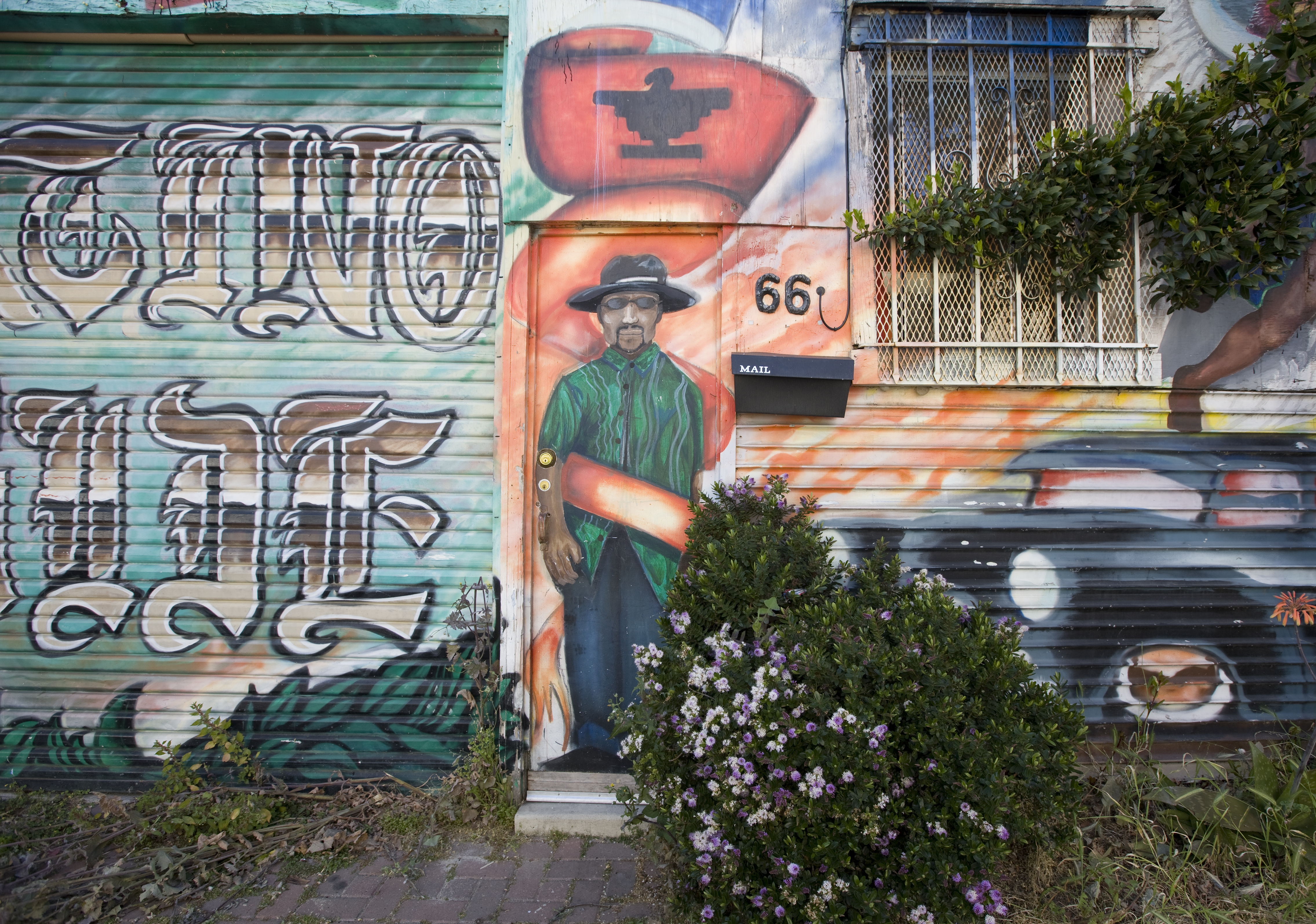
California is a huge state, so it shouldn’t be entirely surprising that two cities in the state made this list. In truth, we could’ve included San Diego too but at that point you’re so close to Mexico, you might as well cross the border into Tijuana.
If you’re looking for the densest concentration of street art in San Francisco, head over to the trendy Mission District. It’s more gentrified than LA’s Boyle Heights, but the Mission is still home to a big Hispanic working-class population and much of the city is covered in street art. Alleyways glow with vibrant art, and many buildings feature large murals that can be seen from blocks away, many of which celebrate the cultures of Mexico and Central America.
A simple stroll through the Mission will give you your street art fill, but if you want to see something truly astounding, San Francisco’s Museum of Modern Art currently has a work by Diego Rivera on display, and unlike the Siqueiros piece in LA, this one has all of its original vibrancy. “Pan American Unity,” is 74 feet wide, 60,000 pounds, and depicts the solidarity between the modern (at the time) working class and the pre-colonial populations of the North and South American continent.
No shade to contemporary artists, but Rivera’s piece is truly a sight to behold and will help you understand just how vital and inspiring the Mexican Muralist movement was.

If you come away from this article with a greater appreciation for Latinx creators, and the art that makes these cities come alive, great, but don’t stop your search here. There are many other under-the-radar communities and art scenes that form the rich tapestry of street art across the world that are worth exploring and supporting if we want to keep them alive. Seek them out!







